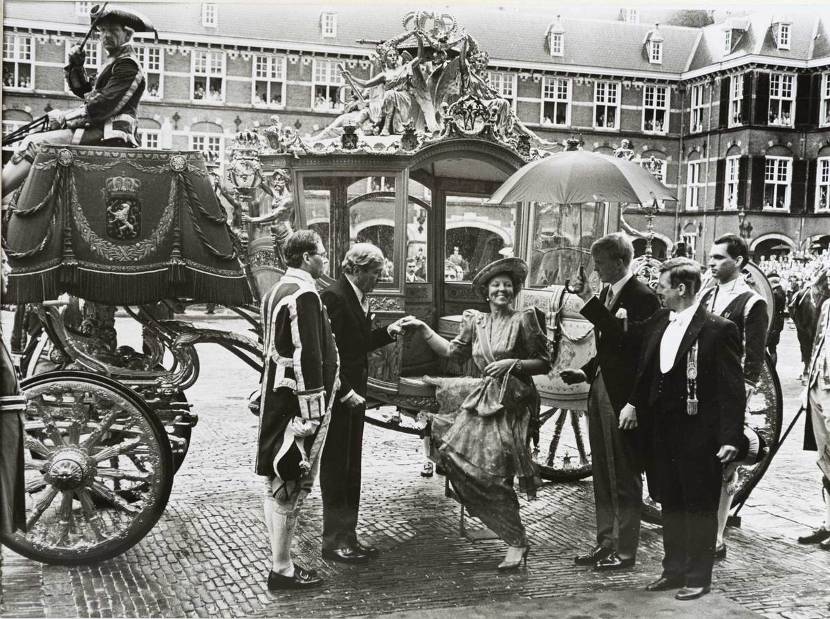Origins and history
Prinsjesdag or Prince’s Day was originally the name given to the birthday on 8 March of Stadholder William V (1748-1806).
In an era marked by political divisions between supporters and opponents of the House of Orange, Prinsjesdag was a popular holiday, providing an opportunity for demonstrations of loyalty to the House of Orange.
The name Prinsjesdag was later given to festivities in honour of members of the Royal House. From the 1930s onwards, it was attached to the State Opening of Parliament. The 1983 revision of the Constitution changed the length of a parliamentary session from one year to four years. From then on, Prinsjesdag no longer marked the official opening of a session of the Senate and the House of Representatives. Instead, the delivery of the Speech from the Throne now represents the start of the new parliamentary year.
Third Tuesday in September
The present Constitution specifies that Prinsjesdag is to fall on the third Tuesday in September. However, this was not always the case. In the 19th century, the opening of Parliament took place initially on the first Monday in November and later on the third Monday in October. When annual budgets were introduced in 1848, more time was needed to debate them. So the opening of Parliament was brought forward to the third Monday in September.
This was changed to the third Tuesday when the Constitution was revised in 1887, so that members of parliament who lived at a distance from The Hague would not have to travel on a Sunday to attend the opening.
